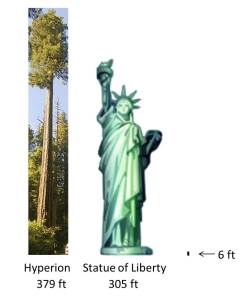“Autumn wins you best by this its mute appeal to sympathy for its decay.” -Robert Browning
When your life depends on visible light, as it does for photosynthetic organisms, life is very colorful. For the majority of the spring and summer, trees are clothed in green. This green color is from chlorophyll, the main pigment of the photosynthetic electron transfer chain. However, in the fall, green turns to brilliant gold and red. What is really going on during this striking show of colors?
What happens to the green chlorophyll?
The diligent deciduous trees have been photosynthesizing all spring and summer and storing that energy within their woody trunks and branches. Once the weather gets colder and the days become shorter, these trees decide to literally cut their losses when it comes to photosynthesis. Continuing to perform photosynthesis throughout the winter would only provide diminishing returns for the plant, so the leaves go through senescence. This programmed cell death coordinates a massive reabsorption of the nutrients contained in the leaves. All of the proteins and membranes found in the leaves comprise a significant percentage of the plant’s nitrogen, and the trees aren’t just going to drop that premium nutrient onto the ground.
Basically, the trees are eating their leaves, but this must be done in a coordinated way. Before the nitrogen from the chloroplast proteins can be reabsorbed by the plant, the proteins must be separated from the chlorophyll pigments. This is more dangerous than it sounds. Plants have elaborate mechanisms for keeping the chlorophyll molecules of the photosynthetic machinery under control so that they don’t become over-excited and induce damage to the surrounding proteins and membranes. Having lots of free chlorophyll around just isn’t an option because it is hazardous to the cells. During senescence, the cells remove the chlorophyll from the proteins and target it for destruction. Upon the loss of this green pigment, other colors appear on the canvas of the forest.
Where do these new colors come from?
The golden carotenoids are always there as pigments in the photosynthetic machinery, but they are usually drowned by the abundance of chlorophyll. Carotenoids are important components of the systems that protect the photosynthetic machinery from damage caused by over-excitation of the chlorophyll. Because of this protective function, the cells are going to keep these pigments around for as long as possible because the photosynthetic machinery is particularly vulnerable to damage as it is disassembled during senescence.
Red anthyocyanins are made especially for the fall. Cells in the leaves synthesize this pigment and store it in their central vacuole causing the leaves to appear red. Anthocyanins are also important for dealing with the consequences of oxidative damage caused by too much energy in the photosynthetic system. They basically act as a sunscreen to absorb the majority of sunlight as the photosynthetic complexes are degraded. This last flash of color helps to ensure that the tree can reabsorb the maximal amount of nitrogen.
Autumn colors aren’t really a death knell. Instead, they advertise that the trees are getting the most out of the last days of their leaves. So enjoy their colors and cheer on the trees. It means they will have plenty of nutrients when they are ready to burst forth again in the spring.
Johnna
References:
http://harvardforest.fas.harvard.edu/leaves/biological
http://www.scifun.org/CHEMWEEK/PDF/Fall_Colors.pdf
http://www.scilogs.com/six_incredible_things_before_breakfast/what-autumn-leaves/


